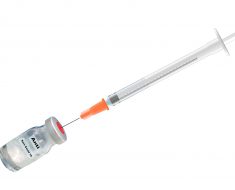
Walking home from playing football, I started seeing swirly, colourful lights that left me light-headed.
Pressure in my head started mounting, and I knew from experience that I was about to black out and have a seizure.
I was just 17 at the time, but this had happened to me before. In those instances, I alerted people around me – so this time, I tried to do the same. I waved down passers-by, asking them to call an ambulance.
Instead of offering help, I was ignored. One person even said I was drunk and on drugs. Worse still, another person in the park called the police on me as they felt ‘threatened’.
When the police arrived, I was coming out of my seizure (recovering stage, or medically known as post-ictal stage). I was disorientated, but I could hear people talking about it and saw the police coming towards me.
They tried to restrain and arrest me, as they claimed I was being aggressive due to being disorientated post-seizure.
Luckily, someone who knew me was nearby and saw what was happening. They came over and explained to the police that I have epilepsy.
Looking back, I was in a vulnerable situation, and I wasn’t getting any help – not even from the police. I felt I was being stereotyped because of the way I looked too.
This incident made me realise that more needs to be done to educate the public about seizures, or not being judgmental and assuming people are drunk or on drugs when they have a medical condition.
We need to raise awareness of different types of seizures and how they look too – that’s why I’m sharing my story.
I was seven when I had my first seizure. I still remember it clearly.
I woke up feeling dizzy, so I went to the kitchen to get a glass of water as I thought I was dehydrated. I managed to get my cup and turn on the tap. Then that was it.

All I remember next is waking up in A&E at St Thomas’ Hospital in London with a cut lip and nurses around me.
It wasn’t until a few more seizures – followed by EEG, MRI and CT scans, as well as other tests – that I was finally diagnosed with epilepsy. My mum and I were told I had scarring on my brain, which was causing me to convulse.
I knew nothing about epilepsy at the time, and neither did my family or friends. As a seven-year-old, I had not even heard of the condition. I just found it all very confusing.
It wasn’t until my teens that my epilepsy started to affect me the most. In fact, I was having three or more seizures a day. This had a big effect on my education, as I was off school for a long period of time.
Even today, I experience two different types of seizures – one is focal impaired awareness (formerly known as a complex partial seizure). When I have this type of seizure, I feel dizzy and light-headed. I feel pressure in my head, I begin to drool and make a mumbling or humming kind of noise. I’ve also been told I have a blank stare.
The other type of seizure I have is tonic-clonic, where I lose consciousness, my muscles go stiff and I fall to the floor. My limbs jerk quickly, I may wet myself and I’m also prone to injuring myself. I have had many black eyes, cuts, and even broken my jaw because of these.
At times, I felt like I was trapped in a ‘black box’ and couldn’t get out. I wasn’t allowed to do what other kids were doing – like riding a bike, or going swimming.
I had to miss out on some school trips and was even told by my neurologist I had to stop playing football. I was told what I couldn’t do, rather what I could do in my life. I had a lot of frustration, resentment and anger towards my epilepsy.
I have had many black eyes, cuts, and even broken my jaw during seizures
Luckily, my condition didn’t have an impact on my relationship with my friends. They were very supportive and understanding. If we made plans and I couldn’t go because I had a seizure, we would just meet up another day. They didn’t see me any differently.
When my seizures were more frequent, I could have several in public places over the course of the day. This was very scary as it happened randomly, and I didn’t know if I’d get the help I required at the time. This means that I have had both good and bad experiences.
Once, I had a tonic-clonic seizure at London Bridge train station. I was helped by a member of the public who told me afterwards that I’d walked close to the edge of the platform, and luckily fell backwards.

They were able to protect my head from injury and put me in the recovery position, keeping me safe until I regained consciousness. They also alerted the station staff and used the emergency function on my phone to call my wife and inform her. This is because I had a medical bracelet stating I have epilepsy, which helped.
Even though I have had some good experiences with the general public, the bad ones have stuck with me. I’ve been made to feel unsafe and anxious. I have genuinely been in need of help and support and no one has helped.
Sometimes I have had no trust whatsoever, especially being young, Black and stereotyped for being drunk or under the influence of drugs.
In 2009, I had epilepsy surgery called a lobectomy to remove the scar tissue in my brain. Basically, they cut away the area that contained the epicentre of my epilepsy.
This was fantastic for me, as it improved my seizure frequency from three to four seizures per day to what I have now, which is one every two months on average.
My epilepsy is much better controlled, and I can try to get on with my life positively. I’ve been able to have a successful career with a company that has supported me well, made me feel normal and has a care plan for me.
I’m now at Watford Football Club working as a performance analyst. I feel valued and appreciated. If I have a seizure at work, I would first of all get checked over by the medical team, then get sent home via a taxi paid by the club and given a few days off.
As my seizure frequency has dropped, it thankfully doesn’t happen as often in public as before, but it doesn’t mean that people shouldn’t be aware of what to do.

If you see someone having a tonic-clonic seizure, first of all, cushion their head with something soft to protect them from injury. Then time the seizure, and try to clear the area of anything that could be harmful.
Check if the person has a medical ID or bracelet with more information on how you can help. After it stops, put them in the recovery position and stay with them, reassure them as they come around.
If the seizure lasts longer than five minutes, if the person goes straight into another seizure, or if you think it’s their first one, that’s when you call an ambulance.
My advice for someone who witnesses one is to stay calm. Don’t panic, and don’t be scared to approach the person to make sure that they’re away from any danger. Staying with the person, timing the seizure and putting them in the recovery position if needed can make such a big difference.
I’m campaigning for this change by raising awareness. I want to share my negative experiences to show how much of an impact not getting the help you need for a seizure can have on someone with epilepsy, both physically and mentally.
I think general first aid training should include epilepsy. More representation on TV would also help, as well as government-led procedures on the condition. We need more awareness and understanding overall.
For more information, visit the Epilepsy Action website here or call their helpline on 0808 800 5050
Do you have a story you’d like to share? Get in touch by emailing [email protected].
Share your views in the comments below.
Source: Read Full Article





